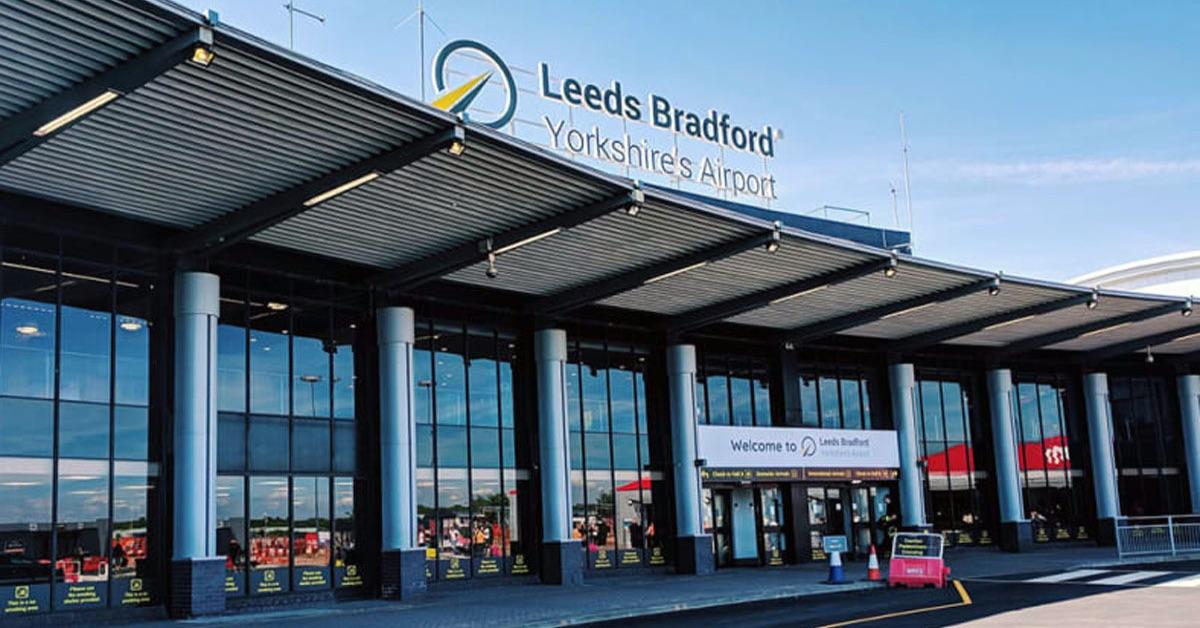Subscribe to trusted local news
In a time of both misinformation and too much information, quality journalism is more crucial than ever. By subscribing, you can help us get the story right.
- Subscription costs less than £1 a week with an annual plan.
Already a subscriber? Log in here.
09
Aug 2024
Leeds Bradford Airport unveils plans for long-haul flights

Leeds Bradford Airport has announced plans to start operating long-haul flights within the next few years – with destinations such as Boston, New York, Oman and Dubai on the radar.
The airport recently unveiled its Vision 2030 strategy, which outlines plans to improve facilities, backed by £200 million of private investment.
Much of the funds will be invested in a terminal expansion, which will see a 38% increase in floorspace, as well as refurbishments to the existing terminal.
Chief executive Vincent Hodder described the existing airport as a "1965 building" that has been "Frankenstein'd and modified" over the years. But Work began on the terminal's regeneration scheme in April and is expected to be completed in 2026.
Ten new aircraft stands will be installed at the airport, while documents suggest funds could also be put towards a railway station, airport hotel and updated parking facilities.
New destinations
The airport welcomed more than four million passengers in 2023, but anticipates having some six million by 2027, and seven million by 2030.
It wants to increase frequency and choice of destinations, as well as add more domestic routes in the UK.
Adding more routes to popular European destinations and new long-haul destinations in the Middle East and the North Atlantic are the top priorities.
In an interview with the BBC, Mr Hodder said destinations currently being pursued include New York, Boston and Chicago in the US, as well as Jeddah, Oman and Dubai in the Middle East.
He added:
We’re already having those conversations with airlines from North America and the Middle East about how we can collectively work together to make those things happen over the next two to three years.
I would be disappointed if by 2027 we did not have flights to North America and the Middle East.
Fully electric Flyer buses
The airport also has said it will achieve net zero carbon status by 2030 through initiatives such as decarbonising transport networks.
The airport hopes to move its entire Flyer bus network to a fully electric fleet, and to work with partners to increase operations of “newer, quieter and more fuel-efficient aircrafts”.
Documents add the airport will also invest in environmental monitoring technology, as well as solar panels and EV charging points.
The plan also says the new parkway rail station on the existing Harrogate line will be delivered by Leeds City Council and West Yorkshire Combined Authority. It will be "between Horsforth and the southern end of Bramhope tunnel", plans say, adding:
It is currently in the design phase and working towards a full business case being submitted by the end of 2024. A number of alternative options for connecting the station to the airport are being considered, with Leeds Bradford Airport playing an active part in the optioneering exercise.
The station will provide an interchange to serve Leeds Bradford Airport and the North West Leeds Employment Hub, being proposed by Leeds City Council and a major employer for North West Leeds in its own right, as well as having a park and ride function to predominantly serve the catchment between North Leeds and Harrogate.
'New era for travel'
Mr Hodder said the plans marked a “new era of travel for the region”, adding:
This transformative strategy will play a vital role in facilitating trade links for local businesses, creating thousands of new jobs, and attracting international investment to Yorkshire.
Our commitment is bold and ambitious, but we are firm in our stance to build a net-zero carbon future for the airport.
With this comprehensive plan in place, we are confident that LBA can continue to play a significant role in improving international connectivity for the region and supporting local economic growth for many years to come.
Leeds Bradford Airport claims the ambitious plans will create up to 5,500 new jobs and generate nearly £1 billion for the local economy.
Tracy Brabin, the Labour mayor of West Yorkshire, said:
Leeds Bradford Airport's Vision 2030 document clearly states how the airport will improve Yorkshire’s connection to the rest of the world. This substantial private investment will benefit local communities and the wider Yorkshire region, serving as a catalyst for considerable, long-term economic growth.
3